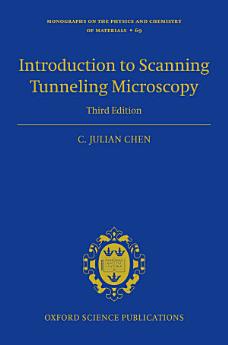Introduction to Scanning Tunneling Microscopy Third Edition: Edition 3
Mar 2021 · Monographs on the Physics and Chemistry of Materials Book 69 · Oxford University Press
Ebook
448
Pages
family_home
Eligible
info
reportRatings and reviews aren’t verified Learn More
About this ebook
The scanning tunnelling microscope (STM) was invented by Binnig and Rohrer and received a Nobel Prize of Physics in 1986. Together with the atomic force microscope (AFM), it provides non-destructive atomic and subatomic resolution on surfaces. Especially, in recent years, internal details of atomic and molecular wavefunctions are observed and mapped with negligible disturbance. Since the publication of its first edition, this book has been the standard reference book and a graduate-level textbook educating several generations of nano-scientists. In Aug. 1992, the co-inventor of STM, Nobelist Heinrich Rohrer recommended: "The Introduction to Scanning tunnelling Microscopy by C.J. Chen provides a good introduction to the field for newcomers and it also contains valuable material and hints for the experts". For the second edition, a 2017 book review published in the Journal of Applied Crystallography said "Introduction to Scanning tunnelling Microscopy is an excellent book that can serve as a standard introduction for everyone that starts working with scanning probe microscopes, and a useful reference book for those more advanced in the field". The third edition is a thoroughly updated and improved version of the recognized "Bible" of the field. Additions to the third edition include: theory, method, results, and interpretations of the non-destructive observation and mapping of atomic and molecular wavefunctions; elementary theory and new verifications of equivalence of chemical bond interaction and tunnelling; scanning tunnelling spectroscopy of high Tc superconductors; imaging of self-assembled organic molecules on the solid-liquid interfaces. Some key derivations are rewritten using mathematics at an undergraduate level to make it pedagogically sound.
About the author
C. Julian Chen received a PhD in Physics from Columbia University in 1985, and then joined the Department of Physical Sciences of IBM Watson Research Centre. In 1993, he published Introduction to Scanning Tunnelling Microscopy, and received a National Outstanding Book Award from China in 1997. From 1993 to 2003 he joined the Department of Human Language Technology of IBM Research. In 1998 he received an Outstanding Innovation Award from IBM for inventing practical recognition technology for Chinese speech. From 2004 to 2006 he was a Guest Scientist at Hamburg University. In 2007 he joined the Department of Applied Physics and Applied Mathematics at Columbia University.
Rate this ebook
Tell us what you think.
Reading information
Smartphones and tablets
Install the Google Play Books app for Android and iPad/iPhone. It syncs automatically with your account and allows you to read online or offline wherever you are.
Laptops and computers
You can listen to audiobooks purchased on Google Play using your computer's web browser.
eReaders and other devices
To read on e-ink devices like Kobo eReaders, you'll need to download a file and transfer it to your device. Follow the detailed Help Center instructions to transfer the files to supported eReaders.







